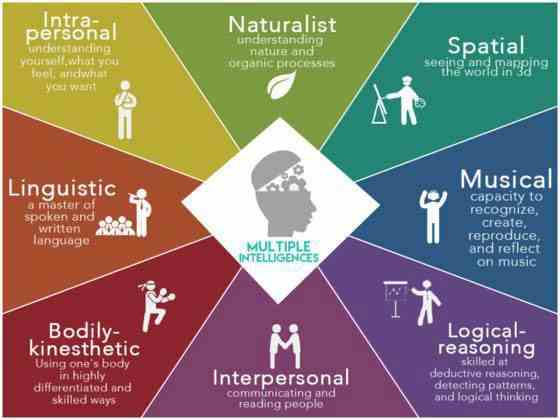What is DMIT
Dermatoglyphics Multiple Intelligence Test (DMIT)
 Dermatoglyphics refers to the branch of science in the study of the patterns of skins (dermal) ridges present on the fingers, toes and the soles of human. Its reveals the congenital links between our fingers and our intrinsic qualities and talents. These patterns are formed from the external ectoderm and usually occur during the fetal development stage, The humans fingerprints form are thus formed from the 13th to 21st week.
Dermatoglyphics refers to the branch of science in the study of the patterns of skins (dermal) ridges present on the fingers, toes and the soles of human. Its reveals the congenital links between our fingers and our intrinsic qualities and talents. These patterns are formed from the external ectoderm and usually occur during the fetal development stage, The humans fingerprints form are thus formed from the 13th to 21st week.
Medical experts and scientists thus discovered that the amount of brain cells distributed in different parts of the brain helps us understand a person’s multiple intelligences as well as his innate potential capabilities and personality through DMIT.
Our fingerprints reveal to us what we need and how we learn, transforming our lives through a holistic education approach.
DMIT features
Uniqueness : There are no two identical fingerprints. One’s 10 fingers are not the same. Dermatoglyphics style, striae height, density, quantity and location of the point is not the same for everyone. No individual has ever displayed the same fingerprint from another digit even if taken from the same hand.
Invariance : The raised pattern network of lifetime from birth to death will not change even if it is due to the regeneration of the labor dermatoglyphics style, quantity and profile shape which is determined the same later.
Hereditary : According to science statistics, immediate family members will be more or less the same between the striae. Normal human cells have 23 pairs of chromosomes. If the chromosomes of the tree or structure are changed, it will cause the corresponding striae mutation. Therefore, the striae have inherited the mutation.
When the fetus is in the mother’s womb, the life area of the fetus’ brain is developed. From 0-3 years old, the emotional area develops rapidly. Between 4-8 years old, the thought function/area is developed. Whereas, between 9-16 years old the mental/spiritual part gradually matures. Hence, after 17 years, want and do not want become the brain’s main model of operation.
The human brain is like a computer, 0-3 is equivalent to the hardware phase, 4-8-year-old is equivalent to the software phase, and above 9 years old is equivalent to the operational phase, namely practice using the computer.

From birth through about age three there are vast numbers of connections and collections being recorded in the brain.
Benefits of DMIT Analysis : Knowing a toddler’s potentials at the early age help parents make decisions on parenting styles and educational methods.
From birth through about age three there are vast numbers of connections and collections being recorded in the brain.
Benefits of DMIT Analysis : Knowing a toddler’s potentials at the early age help parents make decisions on parenting styles and educational methods.
From birth through about age three there are vast numbers of connections and collections being recorded in the brain.
Benefits of DMIT Analysis : Knowing a toddler’s potentials at the early age help parents make decisions on parenting styles and educational methods.
From birth through about age three there are vast numbers of connections and collections being recorded in the brain.
Benefits of DMIT Analysis : Knowing a toddler’s potentials at the early age help parents make decisions on parenting styles and educational methods.
From age three through twelve the brain begins to prune the excessive synapses in an attempt to get organized and eliminate what is not necessary.
Benefits of DMIT Analysis : At this age, Children are curious to learn and they can absorb more than they will when they grow older. Discovering their learning styles and areas of intelligences at this age gives a clue on what courses and activities they should spend more time on.
The teenage years consist of more aggressive pruning as the brain begins to specialize and build an identity.
Benefits of DMIT Analysis : Discovering learning styles at this age can better enhance one’s learning experience. It also serves as a guideline on what type of courses one should take.
Adulthood ushers in a bit of a pruning plateau, where some connections are diminished and others are enhanced.
Benefits of DMIT Analysis : Understanding one’s areas of intelligences help an adult make decisions on careers. Understanding more about self can help adults communicate better and thus build better relationships. Employers can also apply dermatoglyphics analysis to find out the strength and weakness of their employees for position placement.
Why DMIT is Best Approach
Dermatoglyphics Multiple Intelligent Test (DMIT), is the best way to help parents take the right decision for their children. Also, it is the only scientific one.
Through decades of research, scientists found out that our fingerprints implicit the simultaneousness of the development between our fingerprints and human brains neocortex.
Identify children’s talents
Build their talents into strengths as well as to fulfil the ultimate need of self-actualization

What makes DMIT work

DMIT is a revolutionary system that identifies the most prevalent human intrinsic potential with the theory of human genetic inheritance
The U.S Patented Reliable & Accurate DMIT system introduces 4 dominant Personality Types, 5 Learning Styles, 8 Intelligences, 10 Intrinsic Potential of Brain and Learning Sensitivity Index. With thousands of possible combinations, it reveals the best way to be translated into education, personal and career success.
DMIT Completely scientific approach towards analyzing and understanding an individual’s preferred learning styles and learning models
In developing this system, Dermatoglyphics Experts have conducted psychological and physiological pattern profiles with more than 500 thousand individuals since 1985 across China, Japan, Korea, Taiwan, Hong Kong, Singapore and Malaysia to generate a database for cross comparison study which can helps individual to learn the way to discover their inner potential.
